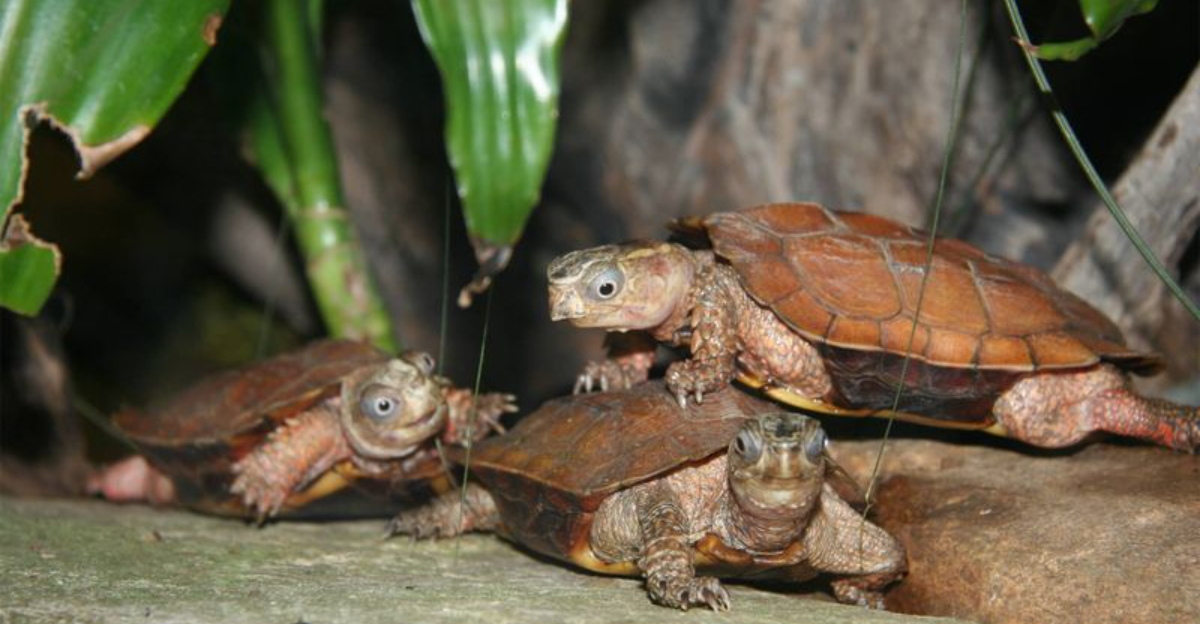Turtles are fascinating creatures that have captured the interest of many. While some species like the snapping turtle and the sea turtle are quite well-known, there are numerous other species that remain relatively obscure.
Let’s shed light on 12 unique turtle species you’ve likely never heard of, each with its own distinct characteristics and habitat. Join us on this journey to discover these hidden gems of the turtle world.
12. Mary River Turtle
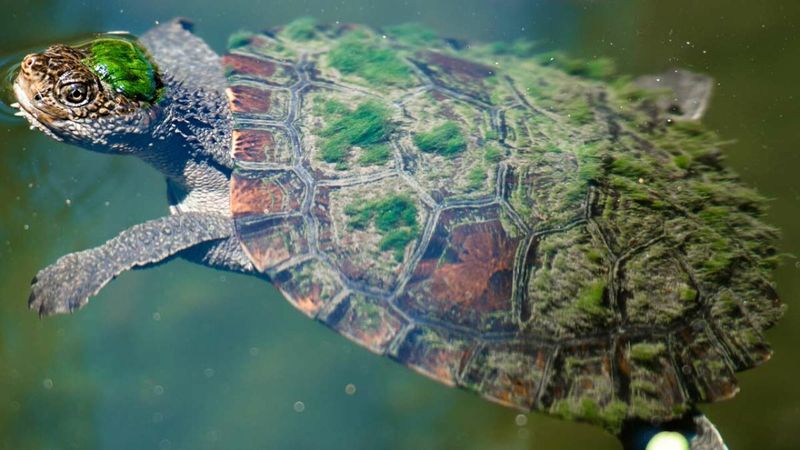
The Mary River Turtle, native to Queensland, Australia, is not your average turtle. Sporting a green mohawk, which is actually algae growing on its head, this turtle is quite the punk rocker of the reptile world.
Found primarily in the Mary River, it has a unique ability to breathe through its cloaca, allowing it to stay submerged for longer periods.
This species faced the threat of extinction due to habitat destruction and the pet trade in the 1960s and 1970s.
Conservation efforts are now in place to protect this fascinating turtle, which was only identified as a distinct species in the 1990s. Its preference for the clear, fast-flowing waters of the Mary River makes it vulnerable to changes in water quality and flow.
If you ever find yourself in Queensland, keep an eye out for this remarkable creature basking on a rock or swimming gracefully in its natural habitat.
11. Roti Island Snake-Necked Turtle
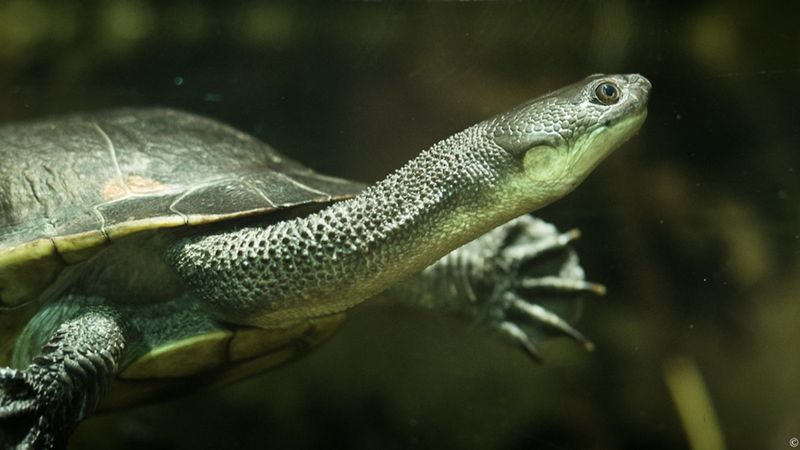
Hailing from Roti Island in Indonesia, the Roti Island Snake-necked Turtle is known for its incredibly long neck, which can be as long as its shell.
This adaptation aids in catching prey swiftly, making it a proficient hunter in its aquatic realm. Its habitat is restricted to small freshwater bodies on Roti Island, making it a critically endangered species.
Local threats, primarily habitat loss and illegal pet trade, have significantly reduced their population in the wild. Conservationists are working hard to create awareness and protection plans to safeguard their future. Captive breeding programs are also underway to help increase their numbers.
Visually striking with a shell that appears too small for its neck, this turtle is a testament to the diversity and adaptability of life. Its unique appearance and endangered status make it a key species in conservation efforts throughout its natural range.
10. Cantor’s Giant Softshell Turtle
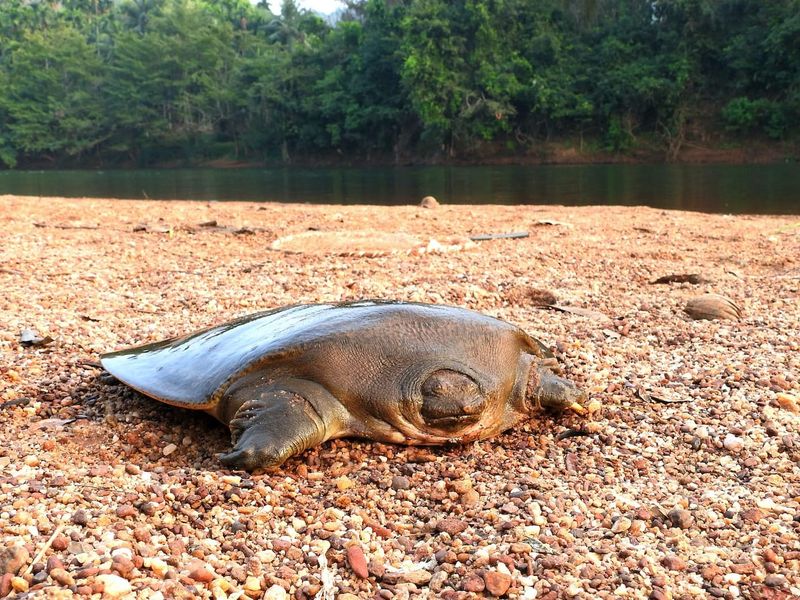
Often found lurking beneath the sands of riverbeds in Southeast Asia, Cantor’s Giant Softshell Turtle is a master of camouflage. With a broad, flat shell and small eyes that peek just above the mud, this turtle is a patient ambush predator. Its diet primarily consists of fish, mollusks, and crustaceans.
The turtle spends most of its life buried in sand, with only its eyes and mouth exposed, waiting for unsuspecting prey to pass by. Unfortunately, habitat destruction and hunting have placed this fascinating creature on the endangered species list.
Efforts to conserve Cantor’s Giant Softshell Turtle focus on protecting its natural habitat and reducing human interference. Its elusive nature means sightings are rare, but those lucky enough to encounter it are in for a remarkable wildlife experience.
9. Mata Mata Turtle
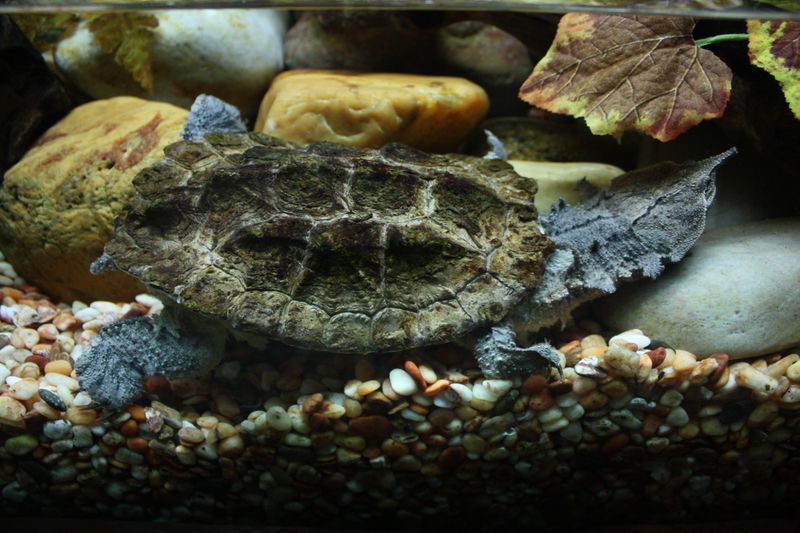
Camouflage is an art perfected by the Mata Mata Turtle. Residing in the slow-moving rivers and swampy areas of the Amazon and Orinoco basins, this turtle’s unique appearance mirrors the debris and leaves of its habitat.
Its flattened head and body, adorned with flaps of skin, make it almost invisible in murky waters.
Rather than chasing prey, the Mata Mata uses its wide mouth to create a vacuum, sucking in small fish and invertebrates. This unique feeding method is both efficient and mesmerizing to observe. Despite its bizarre appearance, the Mata Mata is harmless to humans and plays a crucial role in its ecosystem.
Understanding the ecological significance of the Mata Mata helps in promoting conservation efforts and fostering appreciation for this unusual reptile.
Encouraging local conservation initiatives is vital to preserving its natural habitat and ensuring its survival for future generations.
8. Pig-Nosed Turtle
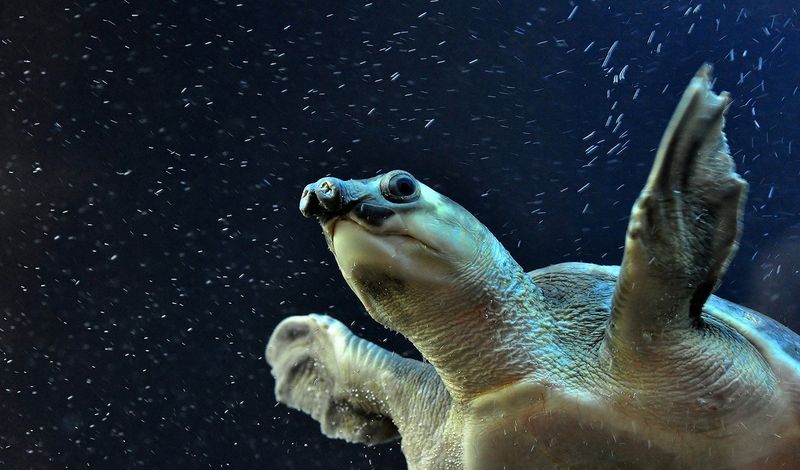
With a snout resembling that of a pig, the Pig-nosed Turtle is truly one of a kind. Its distinctive nose sets it apart from other freshwater turtles and aids in detecting food in murky waters. Found in the rivers and streams of Northern Australia and New Guinea, this turtle also sports flippers similar to those of sea turtles.
This unique adaptation allows it to swim swiftly, making it an adept navigator of fast-flowing waters. However, the Pig-nosed Turtle faces threats from habitat destruction and the illegal pet trade, which have led to a decline in its population.
Efforts to protect this species focus on habitat preservation and stricter regulations on its trade. Engaging local communities in conservation practices is essential to ensure the survival of this fascinating turtle, whose quirky appearance never fails to capture the imagination.
7. Big-Headed Turtle
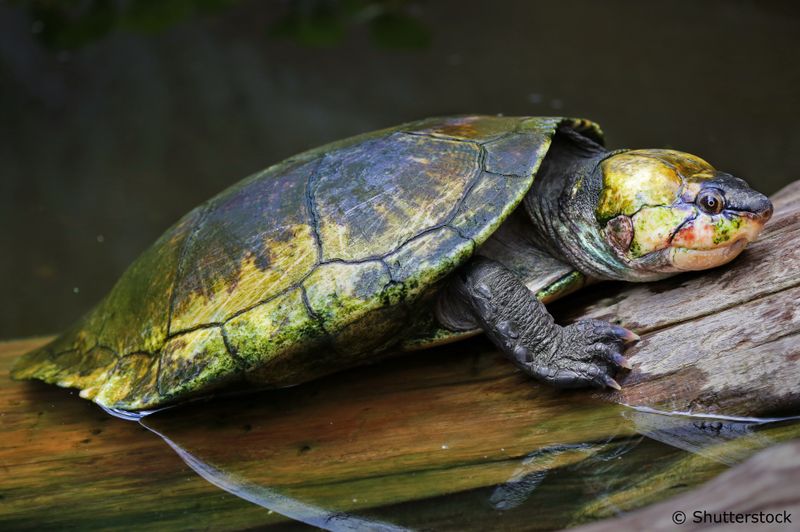
The Big-headed Turtle is aptly named due to its disproportionately large head, which it cannot retract into its shell.
Found in the mountain streams of Southeast Asia, this turtle is well adapted to its rocky environment. Its strong, hooked claws and muscular limbs enable it to climb and cling to rocks, even in fast-flowing water.
Despite its fierce appearance, the Big-headed Turtle is relatively shy and avoids human contact. Unfortunately, habitat loss and poaching for the pet trade have severely impacted its population, making conservation efforts crucial.
Preserving the natural habitats of the Big-headed Turtle and enforcing stricter anti-poaching laws are key strategies in protecting this enigmatic species. Its distinctive features and ecological importance make it a priority for conservationists seeking to maintain biodiversity in its native regions.
6. Spiny Turtle
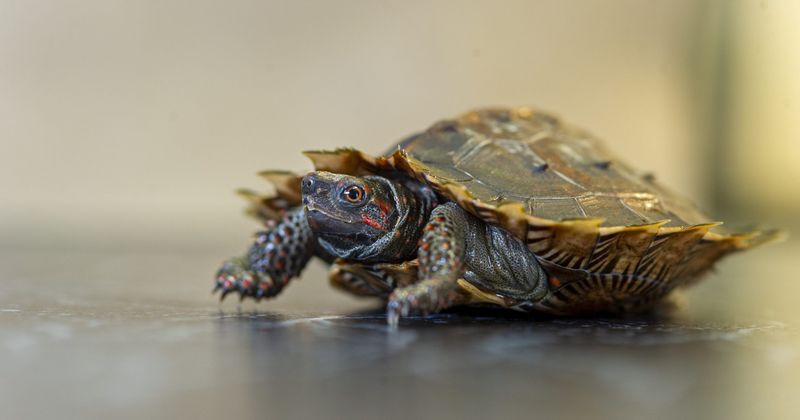
The Spiny Turtle, also known as Heosemys spinosa, gets its name from the prominent spines on its shell. These spines serve as a defense mechanism against predators, adding to its unique appearance.
Native to the forests of Southeast Asia, the Spiny Turtle prefers a terrestrial lifestyle, venturing to water primarily for feeding.
Its diet consists mainly of fruits and invertebrates found on the forest floor. This turtle’s presence indicates a healthy, biodiverse ecosystem, making its conservation a priority. However, deforestation and illegal hunting for the pet trade pose significant threats to its survival.
Conservation efforts focus on habitat protection and breeding programs to help increase their numbers in the wild.
The Spiny Turtle’s distinctive features and fascinating behavior make it an important ambassador for forest conservation initiatives.
5. Yellow-Headed Temple Turtle
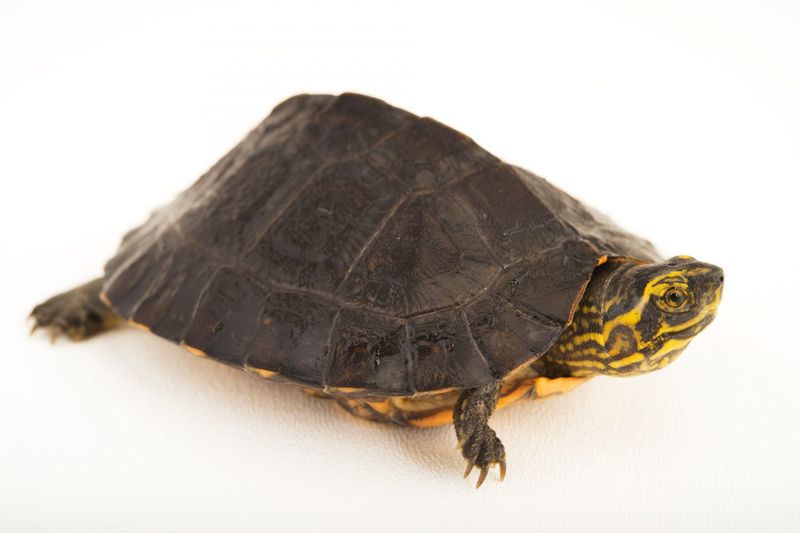
The Yellow-headed Temple Turtle, often seen near temple ponds in Southeast Asia, is known for its striking yellow head.
This turtle has cultural significance in many regions, often being associated with local folklore and religious practices. It thrives in both aquatic and terrestrial environments, feeding on a varied diet of vegetation and small animals.
Despite its cultural importance, the Yellow-headed Temple Turtle faces threats from habitat loss and hunting. Its bright coloration makes it a target for the pet trade, exacerbating its decline in the wild. Conservationists emphasize the need to protect its habitats and regulate trade to ensure its survival.
Supporting temple conservation programs and educating communities about the ecological role of this turtle can enhance protection efforts. Its unique appearance and cultural ties make it a symbol of both natural and human heritage.
4. Black-Breasted Leaf Turtle
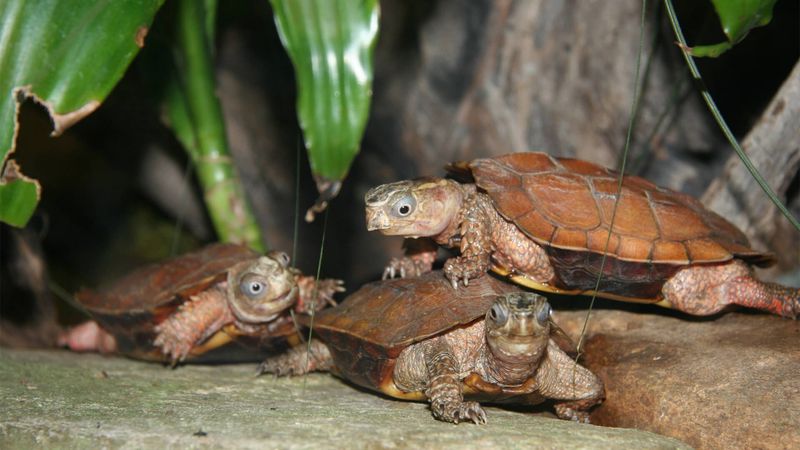
Endearing in its small size, the Black-breasted Leaf Turtle is a master of disguise. Its shell resembles a fallen leaf, providing perfect camouflage against predators in the Asian forests it calls home.
Despite its small stature, this turtle plays a significant role in the ecosystem, aiding in seed dispersal and maintaining forest health.
However, the Black-breasted Leaf Turtle is threatened by habitat destruction and the illegal wildlife trade. Conservationists highlight the importance of preserving its natural habitat to maintain biodiversity.
Captive breeding and awareness programs are crucial in ensuring the survival of this petite yet resilient species. Its unique camouflage and ecological contributions make it a focal point in conservation efforts, embodying the intricate connections within natural habitats.
3. Egyptian Tortoise
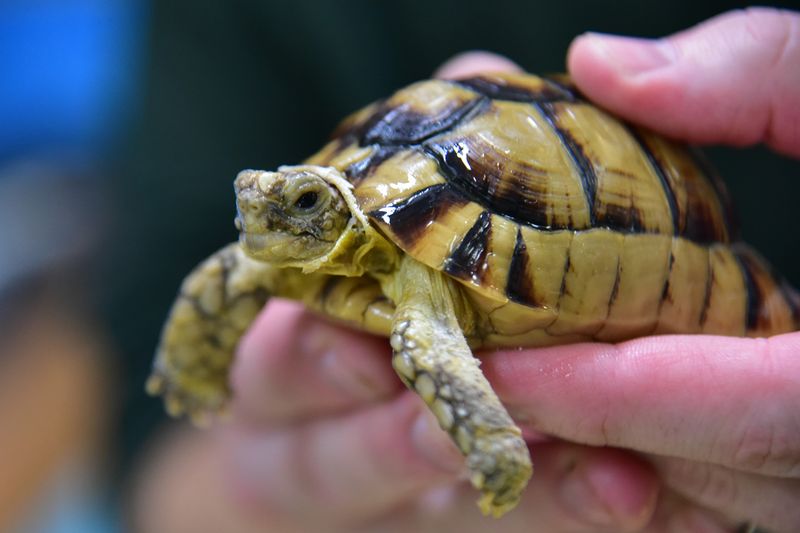
The Egyptian Tortoise, one of the smallest tortoises, is adapted to the harsh desert climates of North Africa.
Its light-colored shell reflects the sun’s rays, aiding in temperature regulation, a crucial adaptation for survival in arid environments. This tortoise is primarily herbivorous, feeding on the sparse vegetation available in its habitat.
Unfortunately, the Egyptian Tortoise is critically endangered due to habitat destruction and collection for the pet trade. Conservation efforts focus on habitat restoration and protection, alongside breeding programs to bolster wild populations.
Raising awareness about the plight of the Egyptian Tortoise is vital for its conservation. Its adaptability and unique desert lifestyle offer insights into the challenges of survival in extreme conditions, highlighting the need for concerted conservation action.
2. Arakan Forest Turtle
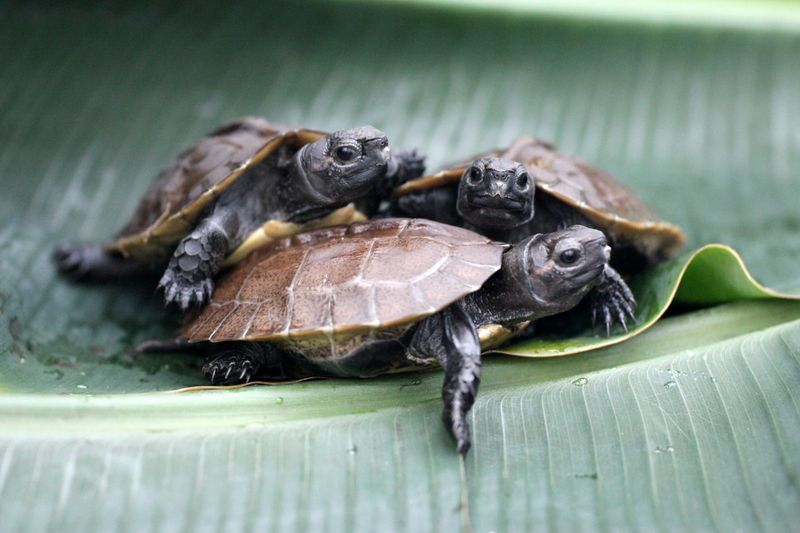
Once thought extinct, the Arakan Forest Turtle was rediscovered in the dense forests of Myanmar. This elusive turtle is primarily nocturnal, emerging at night to forage for food. Its diet includes fruits, small invertebrates, and carrion, reflecting its adaptability.
Habitat destruction and hunting pose significant threats to the Arakan Forest Turtle, making it a focus of conservation efforts. Protecting its forest habitat is crucial for its survival, as is raising awareness about its existence and ecological importance.
Conservationists emphasize the need for further research to understand the Arakan Forest Turtle’s behavior and habitat requirements. Its rediscovery serves as a reminder of the hidden biodiversity within our forests and the continuous need to protect these vital ecosystems.
1. Central American River Turtle
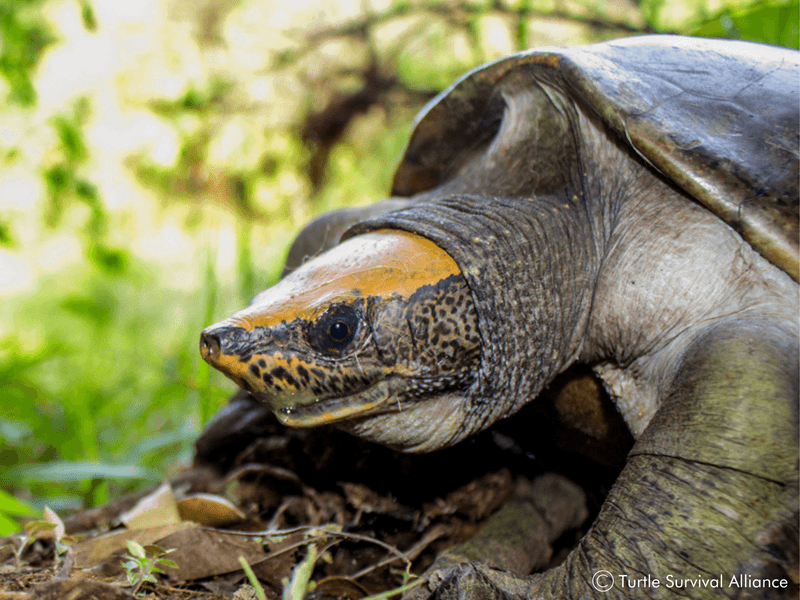
The Central American River Turtle, or Dermatemys mawii, is native to the rivers of Central America. Known locally as the “hickatee,” this turtle is unique among river turtles, as it is primarily herbivorous.
It feeds on a variety of aquatic plants, making it an integral part of its ecosystem by promoting plant growth and health.
Although it was once abundant, overfishing and habitat destruction have led to a drastic decline in its population. Conservation efforts focus on sustainable fishing practices and habitat conservation to prevent further decline.
Community involvement in conservation initiatives is crucial to ensure the survival of the hickatee. Educating locals about sustainable practices and the importance of this turtle in maintaining river ecosystems can significantly aid in its protection.

